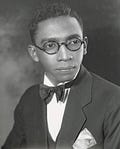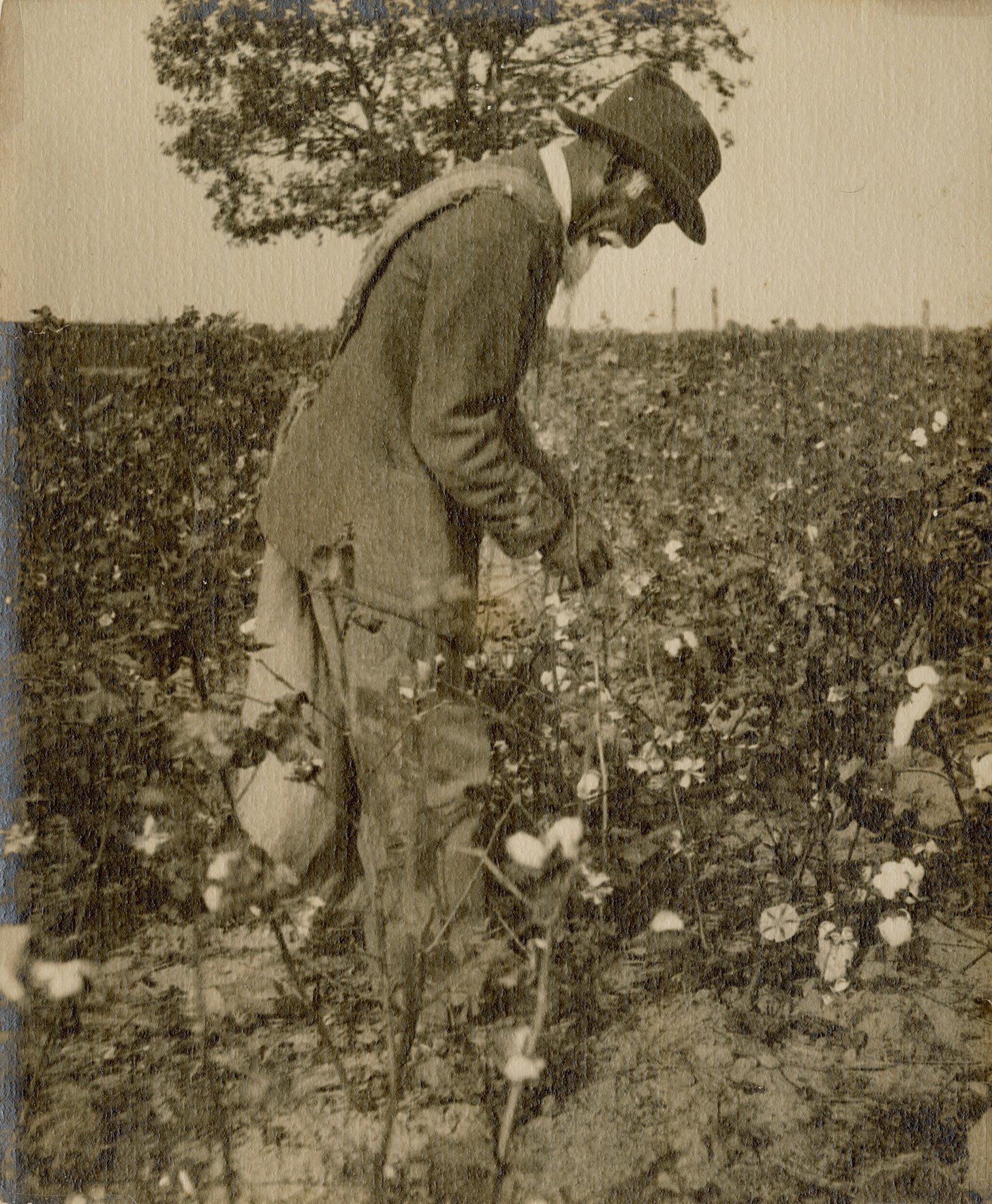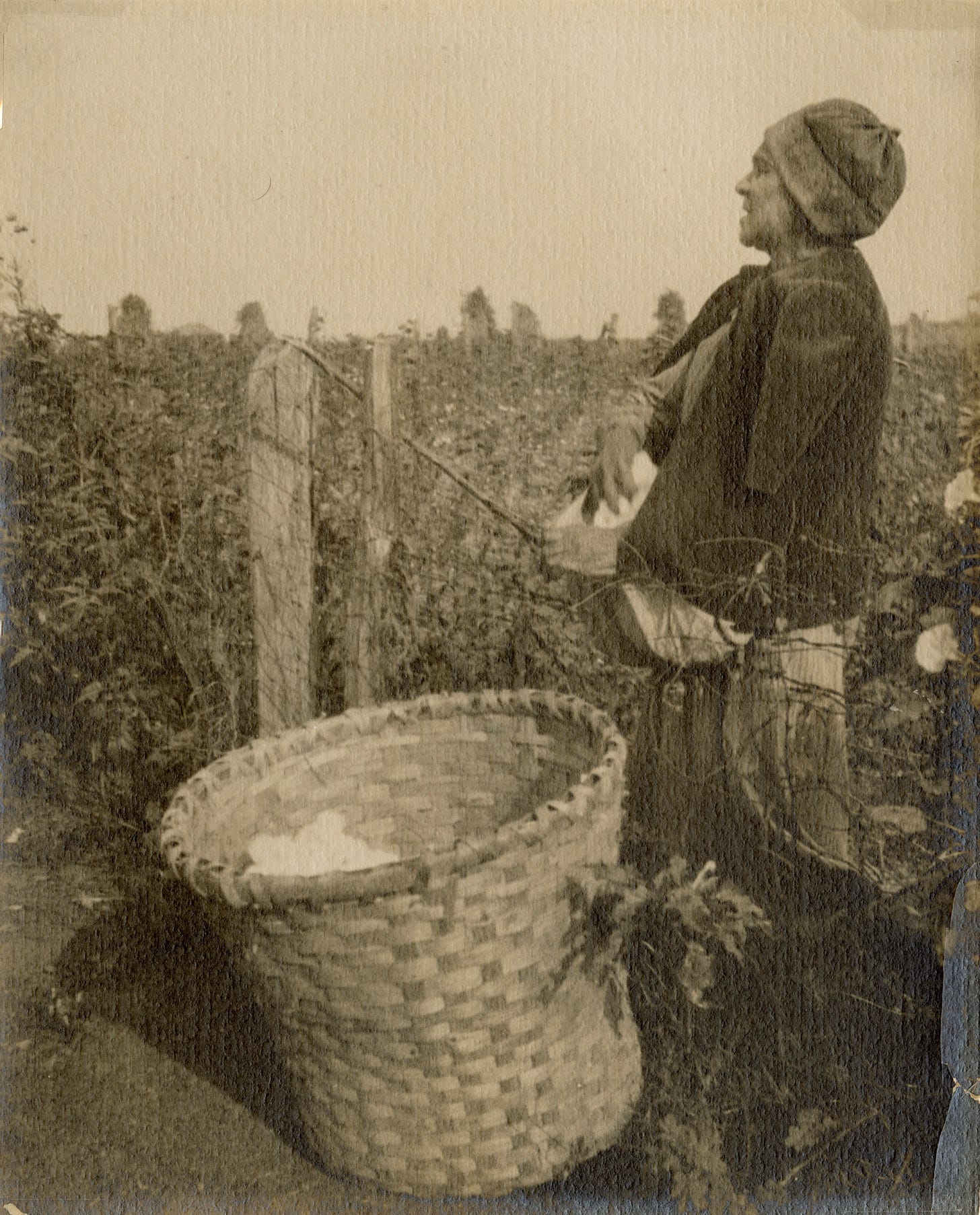Ellie Lee Weems, Photographer
“Like A Southern version of famed Harlem portraitist James VanDerZee, Ellie Lee Weems documented the diversity of African-American life for five decades beginning in the 1920s.” Felicia Feaster, Creative Loafing, July 3, 2002.
As we begin the journey of Necessary Spaces, I will spend some time considering each individual space of everyday practice—connection, exploration, design, empowerment, preparation, renewal, and resistance—and how a particular experiential space contributes to well-being in different places, times, and lives.
Today and in the next two newsletters, I examine the space of connection, so universal, so foundational to human life that even as we are living connection we can relax and forget its forms that are subject to commonplace and expert definition, for examples:
Psychologist John Bowlby was among the first scientists to examine the bonds between people. He called such bonds attachment; later environmental psychologists expanded the definition to include positive and negative emotions associated with places.
Collaboration and cooperative action can refer to connections forged through interventions for social justice in education.
Cultural critic bell hooks gave her volume of essays about creating community the title Belonging: A Culture of Place.
Sustainability can refer to co-existence of humans and nature.
We see all these forms through the life of Ellie Lee Weems, a visual chronicler of the African American South in the twentieth century. Weems was born in 1901 on a farm in Henry County, Georgia in the United States. His immediate ancestors, Alex and Carrie Weems, lived in rural poverty for decades.
Below, I tell the connection story inspired by the images of Carrie and Alex as photographed in 1920 by Grandson Ellie Lee Weems.
In 1864, Alex Weems, Caroline Cloud, and Emmaline Harper were enslaved children living on plantations in Henry County, Ga. In November that year, after Sherman’s army left Atlanta in flames, McDonough, Ga was among the first stops on the “March to the Sea.” Did the children see or hear the troops passing by the farms and through the small towns along the way? No record exists of Alex and Carrie’s reactions. In one of only two Federal Writers Project interviews of young people enslaved in Henry County, Emmaline Harper Heard gave a first-hand account of what she saw from her perch on the fence which separated the Harper plantation from the McDonough highway. Emmaline, who was about 8 years old during the time when Union troops were in the county, recalled that “. . . she and her little mistress. . . “saw a cloud of dust in the distance down the highway and seen a troop of soldiers in blue and silver uniforms marched by. The children, frightened by the sight of these strange soldiers, ran to the house to tell the mistress.” Mrs. Harper told Emmaline’s mother to lock the smokehouse, but the troops took the key and “. . . proceeded to break down the door and appropriated all the meat they could conveniently carry. They also robbed the cellar of its store of jellies and preserves, hitched the buggy mare to the wagon and drove off with the best of the mules tied behindt as Mrs* Harper and the family looked on in tears.” Emmaline’s account captured a scene repeated when Sherman’s army marched 300 miles southeast to Savannah.
When their grandson Ellie Lee Weems Jr. photographed Alex and Carrie in 1920 the couple, born in bondage, stood on acreage they owned. Caroline (“Carrie”) Cloud and Alex Weems married in 1871 as noted in the marriage registry of Spalding County, GA. Together they had 15 children; 14 lived to adulthood.
In the photographs, the couple is harvesting cotton, a crop which had nearly been decimated by the boll weevil in the late nineteenth century. Perhaps that is why Alex (1854-1935) seems so serious and resigned; nearly 70 years of labor on land owned by others wears one down. Perhaps, his pose is one of serenity, though; now he owns this land and its crops and has accepted the risks and the rewards of being an independent farmer. After all, to have a farm had been the fervent desire of many while enslaved and then proclaimed free. Alex is dressed neatly in jacket and trousers. A white shirt collar encircles his neck. He wears a hat with a brim.
Consider Carrie (1857-1953), who also worked as a farm laborer. She looks toward the horizon, head up and alert. She seems to have paused from the effort of pulling bolls from the plant. Perhaps, she is thinking of what news she could expect to hear from her children who were on their own or from her younger children still living at home. Perhaps, she may be enjoying the open field, thinking about additional acres she might buy or a new piece of furniture to make. Carrie wears a long skirt; a jacket is slung across her shoulders. She wears a cap; it hides her hair.
Until the Civil War ended in 1865, Alex lived with his parents Moses (1843- ??) and Dorcas (1833-19??) on the plantation of Thomas Dixon (T.D.) Weems plantation in Henry County, GA. Caroline Cloud, known as Carrie or Carry, was born enslaved, most likely on the Andrew Jackson (A.J.) Cloud plantation where she lived with her mother Franky Cloud.[i]
Alex and Carrie lived in Henry County for most of their lives. At its founding, the county was 70 square miles, but it was quickly diminished when lands from the county were taken to form, wholly or in part, 8 new counties, including Clayton, DeKalb and Fulton.[ii] Named for Patrick Henry, the county was a young one when the Civil War began in 1860; not even a half century had passed since the state enacted the Georgia Land Lottery Act in May 1821, a scant 4 months after the Creek Indians ceded their lands in the Treaty of Indian Springs.
A lottery, of course, implies an element of chance; the Act of May 16, 1821, left no doubt as to whom was “granted luck” in an enslavement economy. A chance to purchase land was given only to those persons entitled to draw. For example, “every white male of 18 year upwards being a citizen of at least three years and an inhabitant of this state three years” was entitled to one draw in the lottery or “every male person of like description having a wife or legitimate male child”[iii] was entitled to two draws in the lottery.[iv] Two of the lucky "winners” of this lottery, Samuel Weems from South Carolina (the father of T.D. Weems) and Revolutionary War soldier Ezekiel Cloud (the father of A.J. Cloud), started farms, then settled previously indigenous land with labor of enslaved people. The 1830 U.S. Federal Census shows that Samuel Weems had 7 enslaved persons; there were 5 free White persons. In the same Census year, Ezekiel Cloud had 8 enslaved persons, and his family numbered 6. By 1850, enslaved workers comprised a third of the total County population of 14,726.[v]
Buttressed by unpaid labor, these farms of the Weems and the Clouds produced grains, tobacco, and cotton.[vi] Settlement of former indigenous territory added more demands to the labor of enslaved workers. As Judith Carney points out, “the labor of plantation slaves was vested not only in the production of export crops, but in the building of the estates themselves. Plantations were carved from forests and swamps cleared by slaves.”[vii]
When the Civil War began, the Weems, the Clouds, and other planters had built considerable wealth. Henry County histories reveal that Samuel Weems and his three sons (Samuel R. Weems, Thomas D. Weems and Bartholomew J. Weems) eventually had acreage east and southwest of Bear Creek Station (what is now Hampton). These land holdings “. . . constituted what was probably the largest ante-bellum plantation complex in the county.” [viii] It could have been that by 1848 T.D. Weems had sufficient resources, including the labor of enslaved persons, to build a large Greek Revival mansion near the Bear Creek area of the county. According to a history of houses in Henry County, this house was impressive. The furnishings came from New York and the entrance hall featured painted landscapes.[ix]
Within this landscape Sherman marched through the interior of Georgia to the city of Savannah. Sherman’s march brought with it more change. Paragraph 4 of Special Order No.120 stated that the “the army will forage liberally on the country under the March” but directed soldiers to refrain from entering into the homes of the residences.[x] Paragraph 5 of the Special Order instructed the army commander (and only the army commander) to “destroy mills, houses, and cotton gins” if the local population resisted and “to enforce a devastation more or less relentless, according to the measure of such hostility.”[xi]
Sherman’s Army destroyed all the businesses in the Bear Creek Village and burned the mill and 200 bales of cotton on the Weems plantation. However, the house, once symbol of the County’s growing wealth, was untouched. Union troops spared it because Weems was a Mason.[xii] You can still see the house on land close to the road if you go to Hampton-Locust Grove Road in Henry County today. The house is reminiscent of the white antebellum mansion that is the symbol of “Tara,” the plantation memorialized in Margaret Mitchell’s novel and the David O. Selznick film adaptation of the book. Henry County was literally “Gone with the Wind” country; Atlanta stood just beyond the county line near Jonesboro in Clayton County (itself carved out of Henry County before the Civil War).[xiii] Mitchell may have borrowed from her family history – she was Philip Fitzgerald’s granddaughter – and his plantation was a few miles away from the Weems lands.
By the time the War had ended, the 1870 Census shows that A.J. Cloud had moved to Griffin, GA, and Franky Cloud had moved with daughters Carrie, Milly, Eliza and Mary to the home of William Amis, a white farmer in Henry County. Moses and Dorcas took the Weems surname and remained on the T. D. Weems plantation; they lived in dwelling number 858 near the antebellum mansion, dwelling number 856, in which Thomas lived with his wife Caroline.[xiv] Few amenities were afforded if the Moses Weems family lived in a typical tenant house with 2 rooms and a sleeping loft.
By the 1870 Census, Moses and Dorcas had 7 children, including Alex, the oldest. He married Carrie in 1871. The 1880 Census shows Alex and Carrie struggling to enter the post War economy. What we know is that the couple had moved to a rented house in Henry County and had had 4 children. The Census also tells us that Alex was “at home,” ill with kidney disease; according to the Census category, he was “Unable to attend to ordinary business or duties.” Carrie was listed as a laborer as was 22-year-old Eliza, who lived in the same dwelling as the Alex Weems family but was shown in a separate record as a single-person household. It is likely that Carrie and her sister Eliza Cloud stepped in to keep the family going while Alex was ill. The two sisters were no strangers to hard work; the 1870 Census had shown both, Carrie (then 17) and 12-year-old Eliza, as laborers.
How did Alex and Carrie fare when Alex was well enough to work? The couple had been proclaimed free with virtually nothing in the way of money or goods. They were illiterate. Yet they remained in Henry County, tied to the land due to the availability of work, positive life experiences with family and friends, and a deep sense of belonging to home place.
Without the benefit of their words and accounts of many of their day-to day deeds on home ground, what can we say about the legacy of experiences and attitudes that they passed on to their descendants? I will consider that question in my next post.
[i] The Georgia, U.S., Property Tax Digest for 1865 shows Moses Weems as a freedman employed by T.D. Weems.
I determined that Franky Cloud and her daughters lived on A.J. Cloud’s plantation by comparing the gender and ages of the enslaved in the slave schedules of the Eighth Census of the United Sates, 1860; Series Number 1 M653: Records of the Bureau of the Census; Record Group Number: 29. A.J. Cloud had 15 enslaved persons.
[ii] The early history is outlined in Elizabeth Cooksey, “Henry County” New Georgia Encyclopedia, last modified July 11, 2022. https://www.georgiaencyclopedia.org/articles/counties-cities-neighborhoods/henry-county/
See R.H. Hankinson, “History of Henry County.” www.shingleroof.org/HC3.htm for details on the size of the county and lands lost to other counties.
[iii] Act of May 16, 1821, §11 (1821).
[iv] Ibid
[v] G. Gilman Smith, The Story of Georgia and the Georgia People, 1732 to 1860 (Macon, Ga: self-pub.,1900), 359. Retrieved February 19, 2022, from http://catalog.hathitrust.org/Record/008652374
[vi] Vessie Thrasher Rainer, Henry County Georgia: The Mother of Counties (self-pub, 1971), 114. Ezekiel Cloud (1762-1851) settled in McDonough in 1823 on lot 134 in the 7th district. In 1834 he moved to his farm on Highway 155.
[vii] Judith A. Carney and Richard Nicholas Rosomoff, In the Shadow of Slavery: Africa’s Botanical Legacy in the Atlantic World (Berkeley: University of California Press, 2009), 126.
[viii] Vessie Thrasher Rainer, Henry County Georgia: The Mother of Counties (self-pub, 1971), 77.
The 1860 Federal Census lists Thomas’s personal estate as $63,275, and according to the 1860 Slave Holders Census, he enslaved 60 persons. Samuel R. and Bartholomew held 25 and 20 people enslaved respectively.
Ezekiel Cloud (1762-1851) settled in McDonough in 1823 on lot 134 in the 7th district. In 1834 he moved to his farm on Highway 155. See Rainer, 114.
[ix] Vessie Thrasher Rainer, Henry County, Ga: Landmark Houses (self-pub, 1986).
[x]William T. Sherman, Special Field Order, November 9, 1864, ¶4, available at https://cwnc.omeka.chass.ncsu.edu/items/show/145.
[xi]Ibid. at ¶5.
[xii] Vessie Thrasher Rainer, Henry County Georgia: The Mother of Counties (self-pub, 1971), 87.
[xiii] Vessie Thrasher Rainer, Henry County Georgia: The Mother of Counties (self-pub, 1971), 277.
[xiv] Census Year: 1870: Census Place: Militia District 576, Henry, Georgia; Roll: M593_157; Page: 438B.





